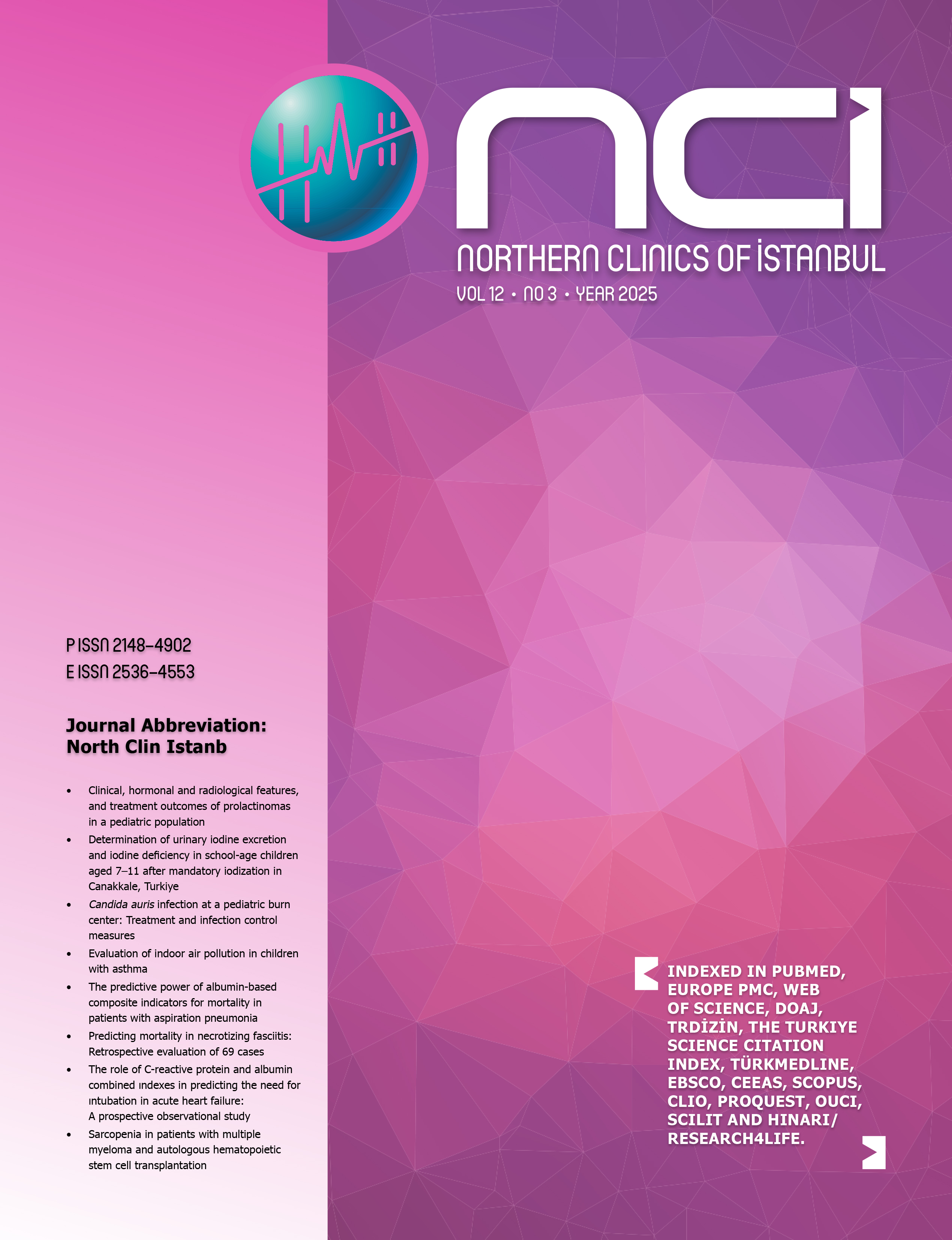Effect of latanoprost on choroidal thickness in patients with newly diagnosed primary open-angle glaucoma
Neslihan Buyukmurat1, Erdi Karadag1, Hanefi Ozbek21Department of Administration, University of Health Sciences, Kartal Dr. Lutfi Kirdar City Hospital, Istanbul, Turkiye2Department of Medical School Administration, Izmir Bakircay University, Izmir, Turkiye
OBJECTIVE: The purpose of this study was to assess the influence of latanoprost on choroidal thickness in patients with newly diagnosed primary open-angle glaucoma using Swept-Source Optical Coherence Tomography (SS-OCT).
METHODS: The retrospective, non-randomized study comprised 40 newly diagnosed primary open-angle glaucoma patients receiving latanoprost therapy (Group 1). Additionally, 40 age- and sex-matched healthy subjects served as the control group (Group 2). Using SS-OCT, measurements of subfoveal, horizontal temporal, and horizontal nasal quadrants choroidal thickness, as well as intraocular pressure (IOP) and retinal nerve fiber layer (RNFL) thickness values, were collected at baseline and after 1 month for both groups.
RESULTS: The mean age was 39.8±4.15 years (range: 1845 years) in group 1 and 41.67±7.95 years (range: 1845 years) in group 2 (p>0.05). The mean choroidal thickness in the subfoveal area, horizontal temporal quadrant, and horizontal nasal quadrant prior to latanoprost therapy were 263.57±84.23 µm, 233.05±80.08 µm, and 219.52±83.28 µm in the group 1 whereas 278.9±93.88 µm, 243.8±73.37 µm and 209.85±92.92 µm in the group 2. After latanoprost therapy, the mean choroidal thickness in the subfoveal area, horizontal temporal quadrant, and horizontal nasal quadrant changed significantly to 299.77±41.29 µm, 269.9±43.80 µm, and 261.32±45.60 µm in the group 1 (p=0.02, p=0.016, and p=0.012, respectively) (Table 1). However, the mean choroidal thickness in the subfoveal area, horizontal temporal quadrant and horizontal nasal quadrant in group 2 changed not significant and was 279.25±103.37 μm, 246.42±87.07 μm and 203.62±106.74 μm, respectively (p=0.4, p=0.5 and p=0.9, respectively). The mean IOP decreased significantly in group 1 (p=0.000) but did not change significantly in group 2 (p=0.153). There was no difference in RNFL thickness values at baseline and 1 st month in group 1 and group 2 (p>0.05).
CONCLUSION: Topical latanoprost may increase choroidal thickness. Swept Source-OCT may contribute to our understanding of the actions of latanoprost on choroidal thickness.
Yeni tanılı primer açık açılı glokom hastalarında latanoprostun koroid kalınlığı üzerine etkisi
Neslihan Buyukmurat1, Erdi Karadag1, Hanefi Ozbek21Sağlık Bilimleri Üniversitesi, Kartal Dr. Lütfi Kırdar Şehir Hastanesi, Yönetim Bölümü, İstanbul2İzmir Bakırçay Üniversitesi, Tıp Fakültesi Yönetimi, İzmir
Amaç: Bu çalışmanın amacı, yeni tanı konmuş primer açık açılı glokomlu hastalarda latanoprostun koroid kalınlığı üzerindeki etkisini Swept-Source Optik Koherens Tomografi (SS-OKT) kullanarak araştırmaktır.
Metodlar: Bu retrospektif, randomize olmayan çalışmaya latanoprost tedavisi alan 40 yeni tanı konmuş primer açık açılı glokom hastası dahil edilmiştir (Grup 1). Ayrıca, yaş ve cinsiyet açısından eşleştirilmiş 40 sağlıklı birey kontrol grubu olarak görev yapmıştır (Grup 2). Swept-Source Optik Koherens Tomografi kullanılarak, subfoveal, horizontal temporal kadran ve horizontal nazal kadran koroid kalınlığının yanı sıra göz içi basıncı (GİB) ve retina sinir lifi tabakası (RSLT) kalınlığı ölçümleri her iki grup için başlangıçta ve 1 ay sonra toplanmıştır.
Sonuçlar: Yaş ortalaması grup 1'de 39.8±4.15 yıl (dağılım: 18-45 yıl) ve grup 2'de 41.67±7.95 yıl (dağılım: 18-45 yıl) idi (p>0.05). Latanoprost tedavisi öncesinde subfoveal alan, horizontal temporal kadran ve horizontal nazal kadranda ortalama koroid kalınlığı grup 1'de 263.57±84.23 μm, 233.05±80.08 μm ve 219.52±83.28 μm iken, grup 2'de 278.9±93.88 μm, 243.8±73.37 μm ve 209.85±92.92 μm idi. Latanoprost tedavisi sonrasında, subfoveal alan, horizontal temporal kadran ve horizontal nazal kadrandaki ortalama koroid kalınlığı grup 1'de anlamlı olarak değişerek 299,77±41,29 μm, 269,9±43,80 μm ve 261,32±45,60 μm oldu (sırasıyla p=0,02, p=0,016 ve p=0,012). Ancak grup 2'de subfoveal alan, horizontal temporal kadran ve horizontal nazal kadrandaki ortalama koroid kalınlığındaki değişim anlamlı değildi ve sırasıyla 279,25±103,37 μm, 246,42±87,07 μm ve 203,62±106,74 μm olarak ölçüldü (sırasıyla p=0,4, p=0,5 ve p=0,9). Ortalama GİB grup 1'de anlamlı olarak azalırken (p=0.000), grup 2'de anlamlı olarak değişmemiştir (p=0.153). Grup 1 ve grup 2'de başlangıç ve 1. aydaki RSLT kalınlığı değerleri arasında fark yoktu (p>0.05).
Sonuç olarak: Topikal latanoprost koroidal kalınlığını artırabilir. Swept Source-OCT, latanoprostun koroid kalınlığı üzerindeki etkileri anlamamıza katkı sağlayabilir. (NCI-2024-5-3)
Manuscript Language: English





















